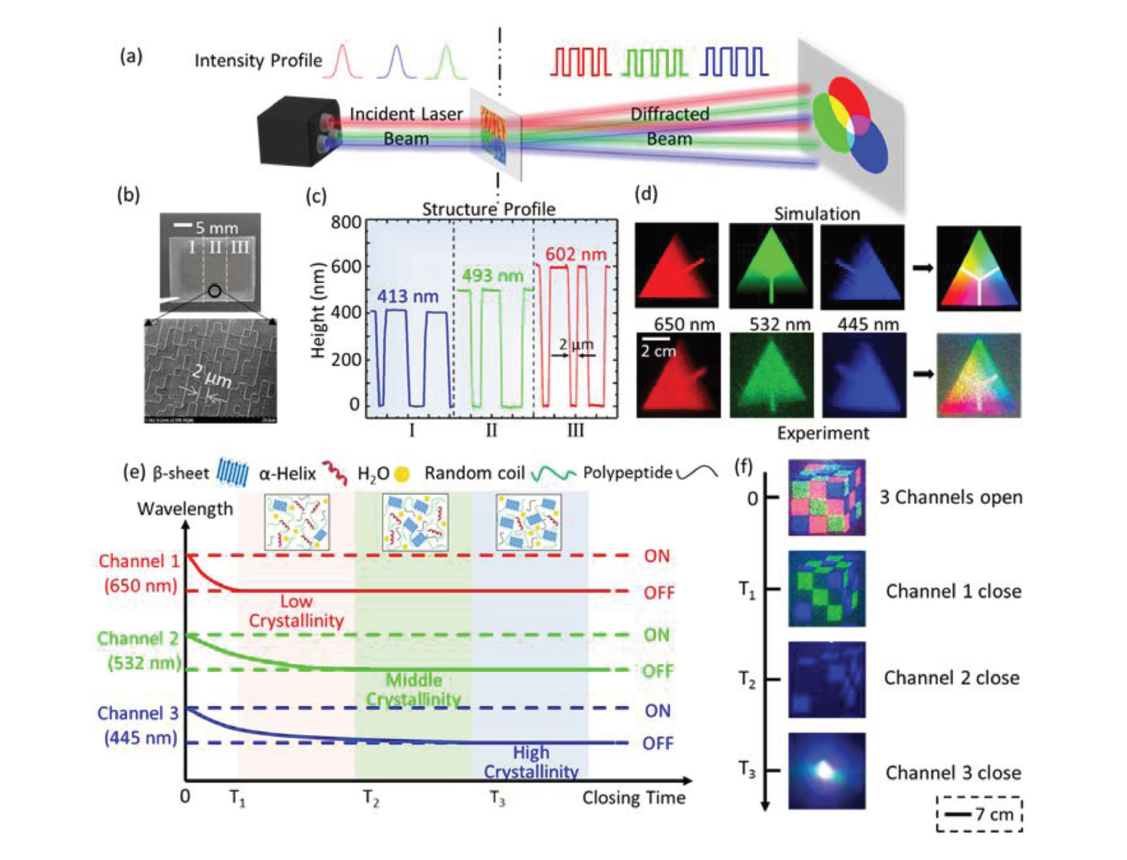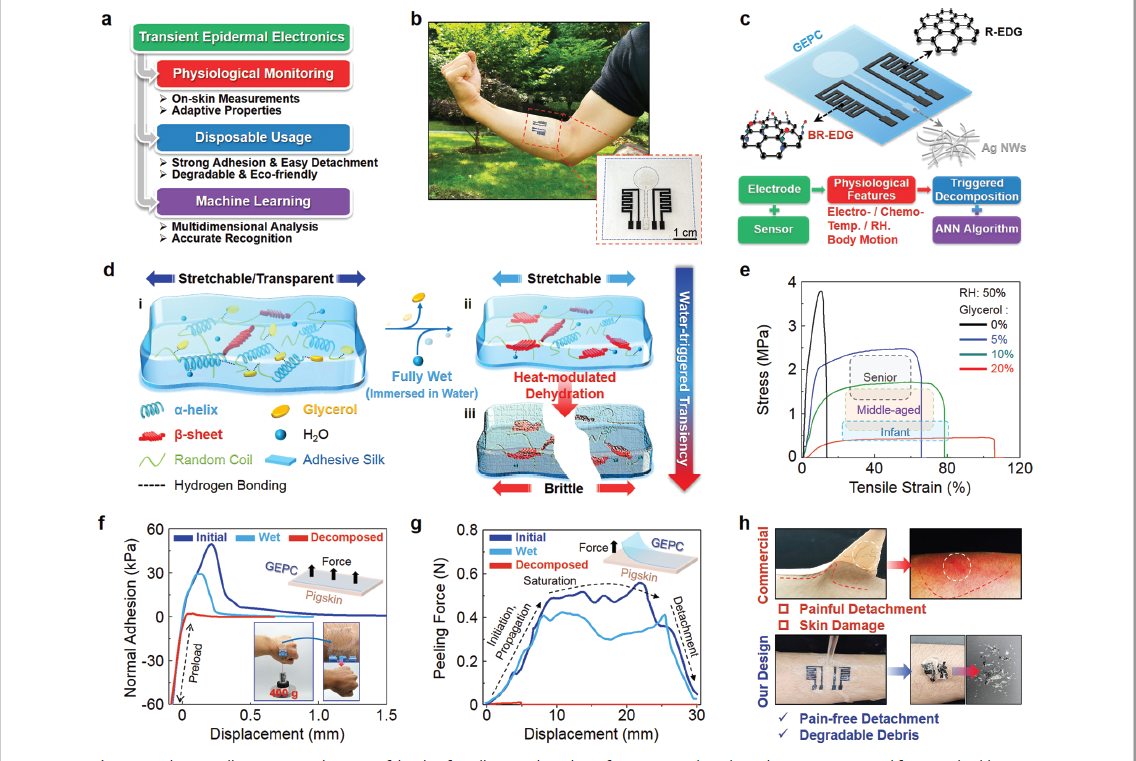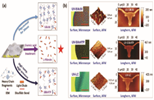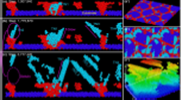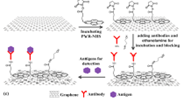-
03-03-2020
Programmable Vanishing Multifunctional Optics
Physically transient optics, a form of optics that can physically disappear with precisely controlled degradation behaviors, has widespread applications including information security, drug release, and degradable implants. Here, a set of silk-based programmable vanishing, biologically functional, multichromatic diffractive optical elements (MC-DOEs) is reported. Silk proteins produced by silkworms and spiders are mechanically robust, biocompatible, biodegradable, and importantly, optically transparent, which open up new opportunities for a set of fully degradable transient optical devices with no need of metallic or semiconductor components. Compared with monochromatic DOEs, MC-DOEs carry out richer information for more practical applic...[ Learn more ]
-
03-03-2020
Skin-Friendly Electronics for Acquiring Human Physiological Signatures
Epidermal sensing devices offer great potential for real-time health and fitness monitoring via continuous characterization of the skin for vital morphological, physiological, and metabolic parameters. However, peeling them off can be difficult and sometimes painful especially when these skinmounted devices are applied on sensitive or wounded regions of skin due to their strong adhesion. A set of biocompatible and water-decomposable “skinfriendly” epidermal electronic devices fabricated on flexible, stretchable, and degradable protein-based substrates are reported. Strong adhesion and easy detachment are achieved concurrently through an environmentally benign, plasticized protein platform offering engineered mechanical properties and w...[ Learn more ]
-
09-06-2017
The Use of Functionallized Silk Fibroin Films as a Platform for Optical Diffraction-Based Sensing Applications
Abstract A set of biocompatible, biodegradable, and biofunctionalizable diffractive optical elements (DOEs) using silk proteins as the building materials is reported. The diffraction pattern of a DOE is highly sensitive to the surrounding environment and the structural integrity, offering numerous opportunities for biosensing applications. 0008 2017 WILEY-VCH Verlag GmbH & Co. KGaA, Weinheim.[ Learn more ]
-
09-06-2017
In situ observation of nanotwins formation through twin terrace growth in pulse electrodeposited Cu films
In situ observation of nanotwins formation through twin terrace growth in pulse electrodeposited Cu films Gong ChengHeng LiGaowei XuWei GaiLe Luo... [ Learn more ]
-
09-06-2017
Label-free graphene biosensor targeting cancer molecules based on non-covalent modification
A label-free immunosensor based on antibody-modi?ed graphene ?eld effect transistor (GFET) was presented. Antibodies targeting carcinoembryonic antigen (Anti-CEA) were immobilized to the graphene surface via non-covalent modi?cation. [ Learn more ]

